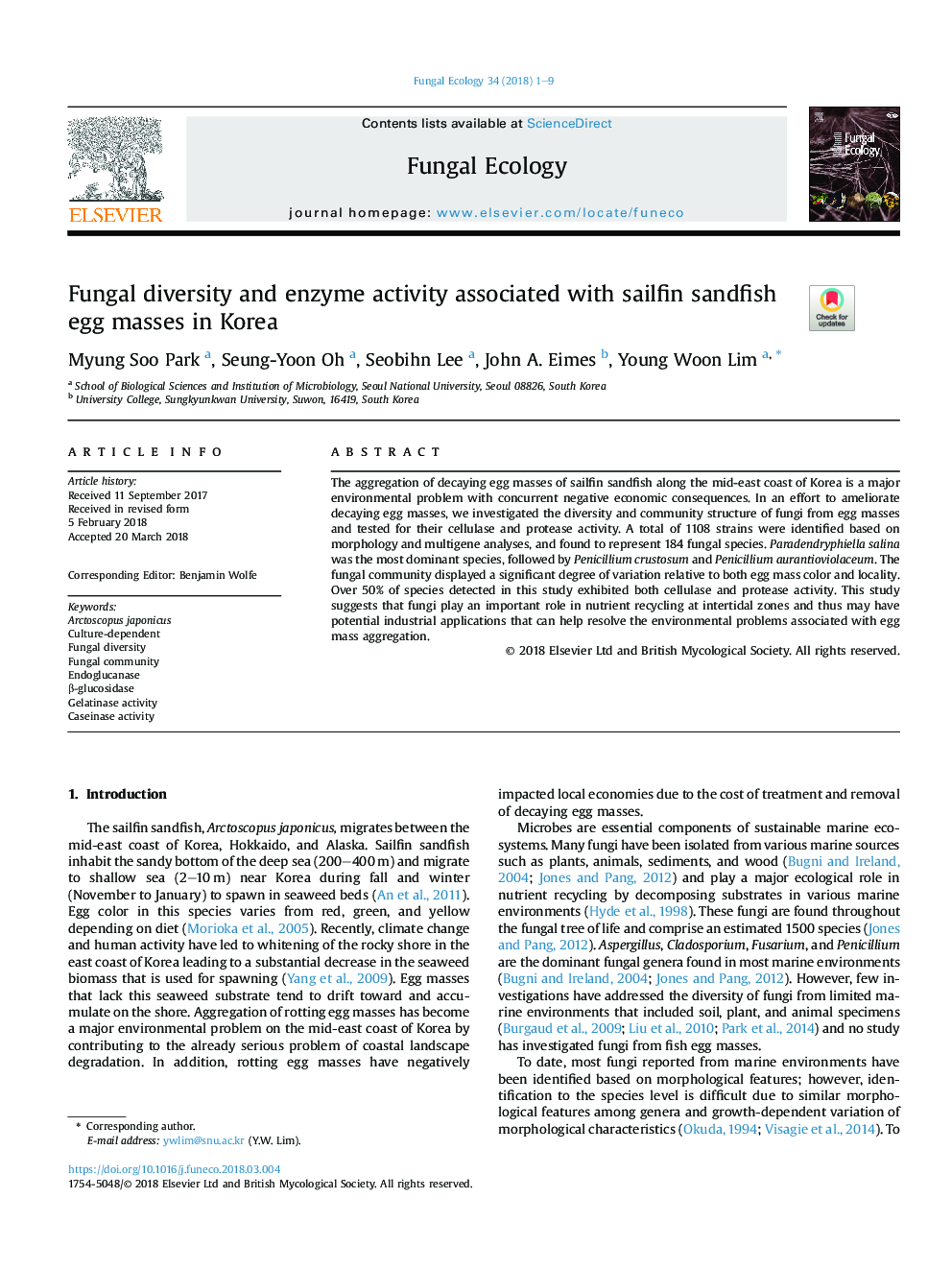| Article ID | Journal | Published Year | Pages | File Type |
|---|---|---|---|---|
| 8384207 | Fungal Ecology | 2018 | 9 Pages |
Abstract
The aggregation of decaying egg masses of sailfin sandfish along the mid-east coast of Korea is a major environmental problem with concurrent negative economic consequences. In an effort to ameliorate decaying egg masses, we investigated the diversity and community structure of fungi from egg masses and tested for their cellulase and protease activity. A total of 1108 strains were identified based on morphology and multigene analyses, and found to represent 184 fungal species. Paradendryphiella salina was the most dominant species, followed by Penicillium crustosum and Penicillium aurantioviolaceum. The fungal community displayed a significant degree of variation relative to both egg mass color and locality. Over 50% of species detected in this study exhibited both cellulase and protease activity. This study suggests that fungi play an important role in nutrient recycling at intertidal zones and thus may have potential industrial applications that can help resolve the environmental problems associated with egg mass aggregation.
Keywords
Related Topics
Life Sciences
Agricultural and Biological Sciences
Ecology, Evolution, Behavior and Systematics
Authors
Myung Soo Park, Seung-Yoon Oh, Seobihn Lee, John A. Eimes, Young Woon Lim,
